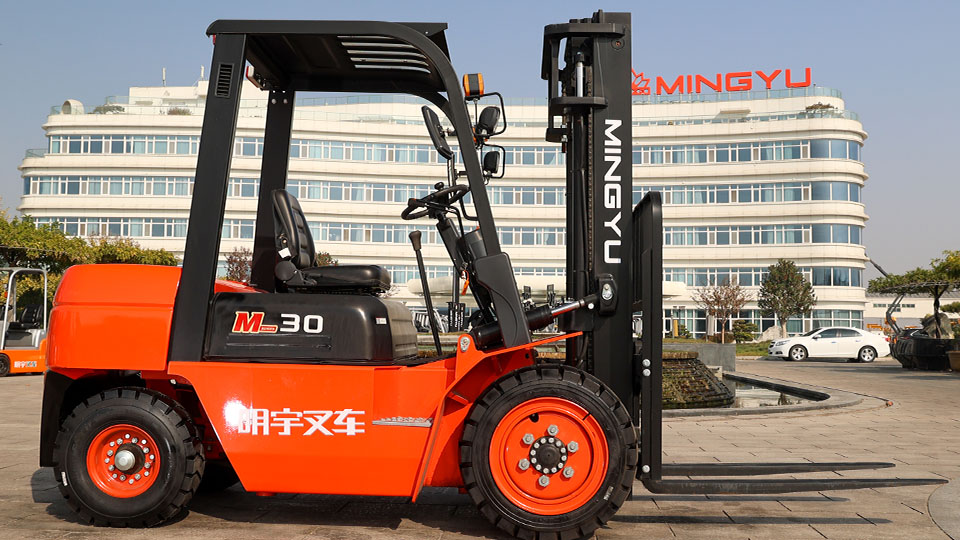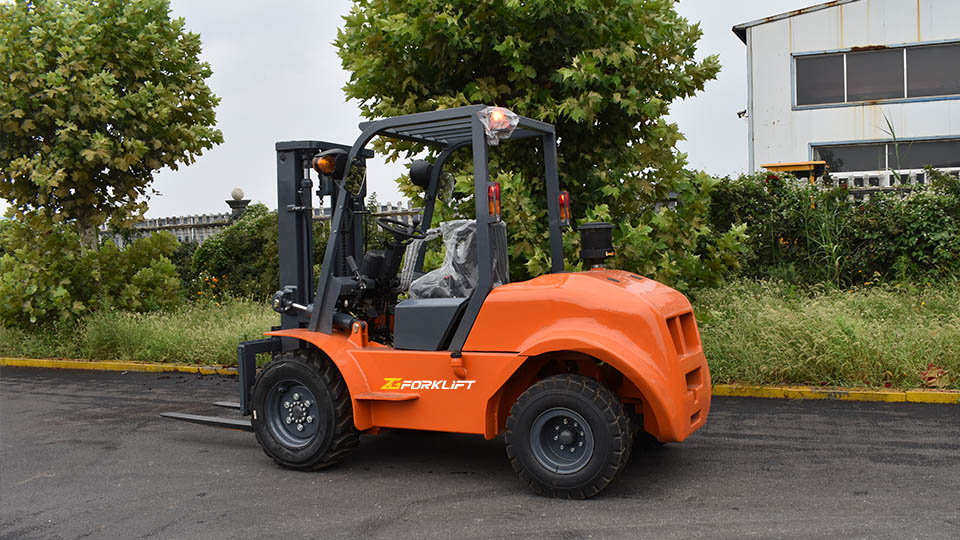
The modern warehouse, construction site, and manufacturing facility rely heavily on Material Handling Equipment (MHE), with the forklift being arguably the most ubiquitous and essential tool. Operating a forklift is a high-responsibility job that requires specialized training, not just for efficiency, but critically, for safety and legal compliance.1 In many jurisdictions, including the United States, Canada, and the European Union, formal training and certification are legally mandated by regulatory bodies such as the Occupational Safety and Health Administration (OSHA) in the U.S.2
Acquiring forklift training and certification is a structured process that ensures an operator possesses the necessary knowledge and practical skills to safely operate the machine in various environments.3 This article serves as a comprehensive technical guide detailing the required components, available training pathways, key curriculum elements, and the recertification process necessary to become a fully qualified and legally compliant forklift operator.
I. Legal and Regulatory Requirements for Forklift Training
Before exploring the training pathways, it is essential to understand the governing regulations, as they dictate the minimum standards for training content and structure.
A. The OSHA Standard (29 CFR 1910.178)4
In the United States, OSHA's standard for Powered Industrial Trucks (PITs) mandates that only trained and certified operators are permitted to operate a forklift.5 This is not a one-time license, but a site-specific, three-part certification process that must be provided by the employer.
Formal Instruction: This includes lectures, video presentations, written materials, and computer-based training.6 It covers the physics of the machine, safety rules, pre-operation inspection requirements, and general operating procedures.

Practical Training (Demonstration): The operator must demonstrate to the trainer that they can perform the necessary tasks, such as maneuvering, stacking, and unstacking loads, and operating controls.7
Evaluation of Performance: The employer must formally evaluate the operator's performance in the workplace. The operator must successfully complete both a written knowledge test and a practical skills test.8
The certification is valid for three years.9 Recertification is required after this period, or earlier if the operator is involved in an accident, observes unsafe operation, or is assigned to a different type of truck.10
B. International Equivalent
Canada: Training is regulated provincially, with the Canadian Standards Association (CSA) and provincial bodies like the Occupational Health and Safety Act (OHSA) setting standards similar to OSHA, emphasizing formal instruction and practical evaluation.11
European Union (EU) / UK: Regulations often follow the Health and Safety Executive (HSE) guidelines and standards like EN ISO 3691-1. The training is typically structured to result in a recognized qualification, often including a practical examination conducted by an accredited body.12
II. The Three Primary Forklift Training Pathways
Individuals seeking certification typically follow one of three main routes, each offering distinct advantages based on the applicant's employment status and experience.
A. Employer-Provided Training (The Most Common Method) ��
By regulation, the employer is ultimately responsible for ensuring the operator is certified. If you are hired for a position that requires forklift operation, your employer will likely provide and pay for the certification.
Structure: Often delivered by an in-house safety manager, a certified trainer, or through a contracted third-party training provider brought to the job site.
Site-Specific Focus: This is the most crucial element. Training covers the specific environment, hazards, and truck models you will encounter (e.g., aisle width, floor condition, ramp slopes, dock plates, specific load types).13 An operator certified on a sit-down counterbalanced truck is not automatically certified to operate a narrow-aisle reach truck.14
Process: New hires typically receive classroom instruction on general safety, followed by hands-on training with the actual equipment, concluding with a written test and a practical driving evaluation.15
B. Third-Party Training Providers (The Initial Certificate) ����
Individuals seeking pre-employment certification or needing recertification outside of employment often turn to specialized training centers, community colleges, or vocational schools.
Offered by: Specialized safety training companies (e.g., Leavitt, various local safety consultants), equipment dealerships (e.g., CAT, Toyota), or technical colleges.
What You Get: These providers offer the Formal Instruction and General Practical Training. They certify that the operator understands the general principles of safe operation.
The Caveat: The certificate issued is for general knowledge. A new employer must still complete the site-specific evaluation (Part 3 of the OSHA requirement) before the operator is legally compliant to operate on their premises.
C. Online or Hybrid Training (For Knowledge Acquisition) ��
Online courses are excellent for the Formal Instruction component but cannot, by law, confer full certification alone.
The Format: Self-paced modules covering regulatory requirements, safety principles, and truck components. Many courses provide printable certificates of completion.
Best Use: Used by employers to streamline the classroom portion, saving time and money. It is also suitable for experienced operators needing to review knowledge for recertification.
Legal Standing: To be fully certified, the online component must always be followed by in-person, practical evaluation by a qualified person (usually the employer or a third-party evaluator).16
III. Essential Curriculum and Technical Knowledge
Regardless of the pathway, effective training must cover technical concepts critical for safe operation. This curriculum is designed to prevent the four main causes of forklift fatalities: tip-overs, collisions with people, collisions with other equipment, and falls from the lift.

A. Machine Mechanics and Stability Principles
The Stability Triangle: The fundamental concept in forklift physics. The machine's weight, the load's weight, and the truck's wheels form a three-point area. The Center of Gravity (CG) must remain within this area to prevent tipping.
Getty Images
Load Center: The horizontal distance from the vertical face of the fork shank to the load's CG. This affects the lift capacity. Training covers using the data plate to ensure the load's weight and center are within the truck's limits.
Lateral and Longitudinal Stability: Understanding how turning, braking, accelerating, and operating on uneven surfaces affects the CG, leading to potential tip-overs.17 Rule: Never turn with the load elevated.
B. Pre-Operation Inspection (The Technical Checklist) ⚙️
OSHA requires a daily (or shift-based) inspection.18 Operators are trained on a detailed checklist:
Visual Check (Engine Off): Tire condition (wear, pressure), forks (cracks, bending), mast, chains, hydraulic fluid leaks, and cleanliness.
Operational Check (Engine On): Checking fluid levels, horn, lights (headlights, backup), gauges, mast operation (lift, tilt, lower), steering, brakes, and control function smoothness.
Technical Focus: Understanding the correct tension and lubrication of the lift chains and the potential dangers of bypassing safety interlocks or deadman switches.
C. Operational Best Practices (Load Handling)
Truck Control: Safe travel speeds, maintaining control when empty versus loaded, and awareness of the "tail swing" (the rear of the truck swinging wide when turning).
Load Entry: Training on correct fork spacing, entering the pallet squarely, ensuring the load is fully seated against the carriage, and applying backward mast tilt before moving.
Visibility: Operating in reverse when a load obstructs forward view, using spotters when required, and understanding how to safely cross intersections and navigate blind corners.19
Working with Ramps: Always traveling with the load upgrade (up the ramp) to maintain longitudinal stability, regardless of the direction of travel.20
IV. The Practical Skills Evaluation (The Test)
Formal certification hinges on a successful practical evaluation, which is a standardized test of real-world skills.21 The trainee is typically evaluated on a set course, scored on safety, control, and efficiency.
A. Key Evaluation Scenarios
|
Skill Evaluated |
Description |
Safety Focus |
|
Pre-Shift Inspection |
Verbally explaining and physically checking all safety and mechanical components. |
Identifying hazards before operation. |
|
Maneuvering (Empty) |
Driving forward and reverse through a defined course (cones, barrels) without striking obstacles. |
Control, spatial awareness, and proper use of horns. |
|
Load Pickup & Transport |
Selecting a load, approaching squarely, ensuring even fork placement, tilting back, and transporting at a safe height ($\sim 4$–$6$ inches from floor). |
Load security and stability. |
|
Stacking & Unstacking |
Raising and lowering a load into a designated racking position (often elevated $10$–$15$ feet) smoothly and accurately. |
Smooth control, feathering, and awareness of lateral tilt. |
|
Stopping and Parking |
Demonstrating emergency stopping procedures and safely parking the truck (lowering forks, neutralizing controls, setting the brake). |
Preventing unauthorized movement. |
B. The Qualified Trainer
The person conducting the practical evaluation must be a "Qualified Person," which means they possess the knowledge, training, and experience to train operators and evaluate their competence.22 This person is critical to the legal compliance of the certification.
V. Recertification and Maintaining Compliance
Certification is a continuous requirement, not a one-time event.23 Operators must remain compliant throughout their careers.
A. The Three-Year Cycle (Periodic Refresher)
Every three years, the operator must undergo formal instruction and a performance evaluation. This refreshes general knowledge and ensures the operator hasn't developed unsafe habits (a common phenomenon known as "skill drift").24
B. Events Requiring Immediate Retraining
Retraining is necessary immediately if any of the following occur:
Accident or Near-Miss: The operator is involved in an accident or a "near-miss" incident.
Unsafe Operation: The operator is observed operating the truck in an unsafe manner.
New Equipment/Environment: The operator is assigned to drive a different type of truck (e.g., switching from a pneumatic tire truck to an electric cushion tire truck) or is moved to a different work area with new hazards.25
Workplace Change: Substantial changes in the work environment that affect truck operation (e.g., new racking system, changes in pedestrian traffic patterns).26
C. Documentation and Record Keeping
The employer must prepare and maintain records of the training, including the operator's name, the date of the training/evaluation, and the name of the trainer.27 This documentation is the legal proof of compliance and must be made available to regulatory inspectors upon request.
Conclusion: The Path to Professional Operation
Acquiring forklift training and certification is a non-negotiable step toward professional employment in logistics, manufacturing, and construction.28 It is a structured process involving classroom instruction on physics and regulations, followed by intensive practical training and evaluation.29
The key to success is understanding that certification is an employer-driven, site-specific process designed to manage risk. Whether securing initial certification through a third-party vendor or completing the final, site-specific evaluation provided by an employer, an operator who masters the stability principles, executes the pre-shift inspection, and demonstrates fluid, safe control is not just compliant—they are a high-value asset, ensuring the safety of personnel and the efficient flow of the modern supply chain.
Name: selena
Mobile:+86-13176910558
Tel:+86-0535-2090977
Whatsapp:8613181602336
Email:vip@mingyuforklift.com
Add:Xiaqiu Town, Laizhou, Yantai City, Shandong Province, China